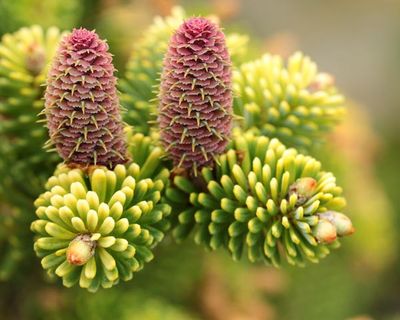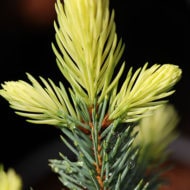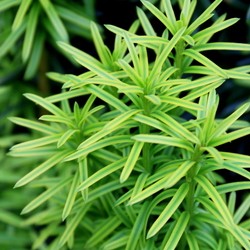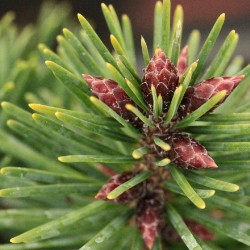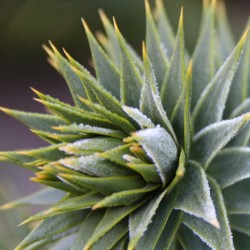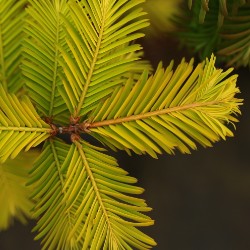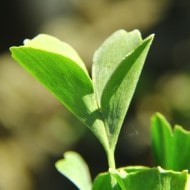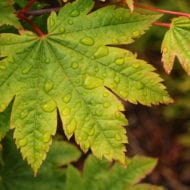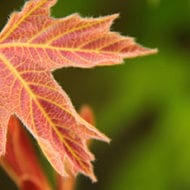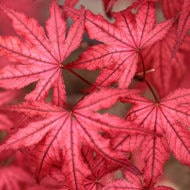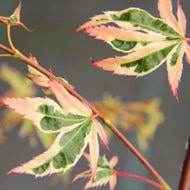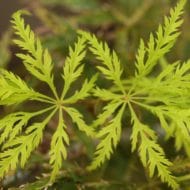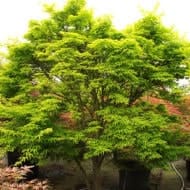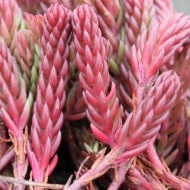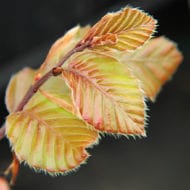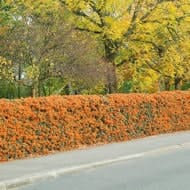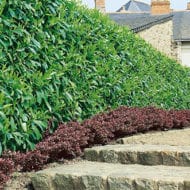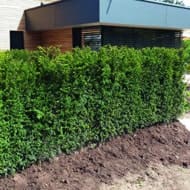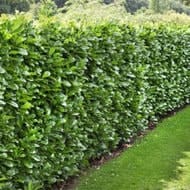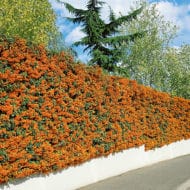Japanese maples are a cornerstone plant in temperate gardens all over the world. There is an endless array of colors, textures, shapes, and sizes available on the market, making them incredibly versatile in the garden. Nothing adds an elegant ambiance to a landscape quite like a Japanese maple. The best part is that you don’t need to be limited by garden space in order to enjoy all that maples have to offer. If you are looking for potted plants, then Japanese Maples in containers are your best bet! These potted maples can be placed on a patio, deck, balcony, or courtyard, or moved between spaces as desired! This article explains everything you need to know about successfully growing Japanese maples in containers.
Why Grow Maples in Containers?
There are many reasons why you might choose to keep a Japanese maple in a container. We will look at a few of them here.
Small and / or Urban Gardens
In our world today, gardens are getting smaller and increasingly more urban. Many times, there is simply nowhere available to plant a new tree, even a small one. However, it is even more crucial to grow plants in these areas for both the environment and our mental health. Growing Japanese maples in containers is a perfect solution for a small or urban garden.

Patios and Courtyards
Although separate from the rest of the garden, patios, and courtyards are often important gathering spaces. You can create a seamless transition from your garden beds through the patio by using a selection of containerized plants. These also allow you to create a beautiful garden view out of windows that might overlook what could otherwise be an unsightly, bare space.

Balconies
The percentage of Americans living in apartments and townhouses is growing, and most have no choice but to turn to indoor plants to satisfy their need for green. Anyone with a balcony or rooftop space can grow Japanese maples in containers! Turn your city green by growing plants anywhere you can squeeze them in. The planet and your mental well-being will thank you.

Flexibility
Another reason for growing Maples and other plants in containers is to provide flexibility. Maybe you like to change your garden design regularly to keep it interesting, looking at how Japanese Maples and companion plants complement each other in different seasons. Maybe you have a window overlooking something unsightly and would rather look at a beautiful maple tree. Growing a fairly mature tree in a large pot gives you the extra height that would take years to achieve otherwise. Or perhaps you live in a climate with very cold winters but you just can’t bear not having Japanese maples in your garden. If you grow them in containers, you can put them in a protected space during the winter and still enjoy them when the temperatures become friendlier.

How to Grow Maples in Containers?
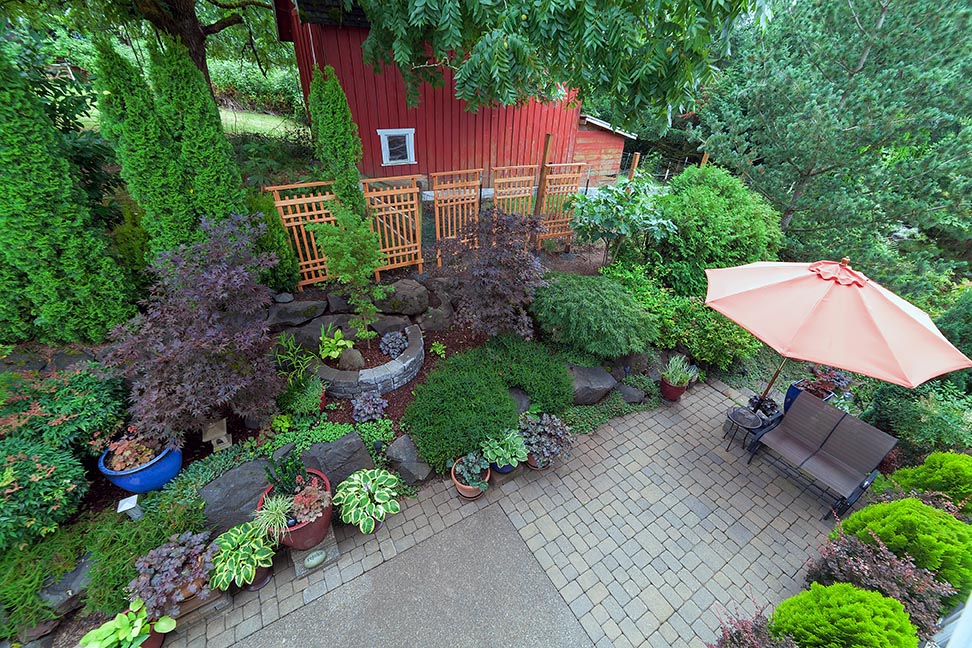
Getting started might seem daunting, but here is everything you need to know about how to grow Japanese Maples in pots and keep them happy
Choosing a container –
Any type of pot will work, as long as it has drainage holes. This is crucial! If your pot does not have drainage holes and you can’t find an alternative that you like, you can drill some yourself. Make sure that you have good sized holes (at least ½” across) that won’t get clogged with bits of potting soil. Pots that are wider at the top than at the bottom will generally be easier for planting and removing the tree later for sizing up or root pruning. There are decorative plastic pots available that look quite convincingly like ceramic, but are much more lightweight and easier to move. On the other hand, you might want some hefty bottom weight if you are planting a large maple with lots of high growth to keep it from tipping over in the wind. Select a pot around 6” wider than the pot your maple is in currently.
Potting mix –
There is no hard and fast rule about which potting mix to use, but experts generally agree that a bark-based mix makes Japanese maples flourish. They don’t like to be waterlogged. Make sure you choose a mix (or create your own) that dries out within 2-3 days after thoroughly watering. You will need to water more frequently, but your maples will be incredibly healthy.Typical components are bark mulch fines, pumice, organic compost, peat, and sand, but many maple lovers use nearly pure bark and have great results. The mix we use at our nursery in the PNW is 75% bark, 15% pumice, and 10% peat moss.
Planting –
When you have your container ready to go with drainage holes, fill the pot with a well-draining potting mix (those made of primarily bark work well) up to where you can set the maple on top of it and have the top of the soil around the maple even with the top of your new pot. Remove the maple from its pot and gently tease the roots apart, paying special attention to any that might be circling around the outside. Set the tree into the new pot and fill in around it with more of your potting mix. Tamp it down very gently (don’t pack it too tight!). Water until you see it run through the bottom of the pot, and you’re done!
Water –
Keeping your potted maples watered is extra important. When they are planted in the ground, they can grow deep roots to access water on their own, but when they are in pots they are at your mercy. A great way to keep them watered without much fuss is to have a drip system set up with emitters that you can stick in each pot. Set it on a timer and apart from checking once in a while to make sure everything is working properly you won’t have to worry about it again. You want the soil moist, but not saturated.
Fertilizer –
Applying a slow-release fertilizer in the spring is a great way to keep your maples happy, and it is especially important when they are growing in potting mix rather than real soil. Soil is a vibrant ecosystem with nutrients constantly being added and broken down. Potting mix has that in a lesser degree, so it needs some help adding nutrients fast enough to keep up with the plant’s demands. You can find our special Maple Fertilizer Blend here.
Managing Growth –
Over time, your maple will outgrow its pot. While this can feel like a pain, it is a good thing! It means your tree is happy, healthy, and thriving. You have a few choices: You can plant the tree in the ground (if you have a space for it) and replace it with a new, smaller tree; you can plant the tree into a larger pot and put something smaller in the one it has outgrown; or you can prune the branches and roots to keep it within the same pot indefinitely. The third option may seem intimidating, but it is an effective strategy used in bonsai that can be applied here. Every few years, simply prune away roughly equal amounts of top growth and root growth on your maple to keep it balanced and the right size for the space and pot. You’ll want to prioritize cutting away older, woodier roots to make way for fresh, vigorous new roots. On the top, simply prune whatever you like to make it aesthetically pleasing. Don’t be scared off by thinking that your tree should be “perfect”; rather remember that every tree is unique and has its own character and personality. Your pruning is simply helping to develop that character and personality in a more noticeable way.
Best Maples to Grow in Containers
The most important choice you will make in the process of growing maples in containers is selecting your maple cultivar. While almost any Japanese maple can be grown in a pot, there are some that are better suited to it than others. Generally, the more slow-growing the maple is the better, as you will have to re-pot or prune it less often. Then you want to consider having a good mix of colors and textures if you are grouping several together. Our experts put their heads together to create the following list of the top 10 Japanese maples for growing in containers:
1. Acer palmatum ‘Mikawa yatsubusa’
is an extremely popular maple, and it is possibly the best choice for growing in containers. This maple has a distinct growth habit that makes it practically a natural bonsai, giving you all the benefits of the sculptural look of a bonsai without any of the work. In spring, new growth flushes out in yellow and bright green tones, with a deep green following through the summer. The fall color ranges from gold to scarlet. Mikawa yatsubusa is hardy in USDA Zones 5-8 and grows well in full sun to partial shade. Its height by width at 10 years old is about 5’ by 4’ without any pruning. #1, #3, and #7 sizes are available. It grows best in full sun to partial shade. Shop Here.

2. Acer palmatum ‘Koto no ito’
is a stunning variety, most notable for its long, fine leaves. Its name translates roughly to “golden harp strings” or “harp strings”, which is fitting due to the delicate shape of the leaves. It provides a unique texture to the garden that is hard to achieve with anything else. In spring, the leaves emerge in pale green to pink tones, aging to a soft green through the summer, with an orange and gold show in autumn. It grows slowly but in a primarily upright habit, reaching about 7’ tall by 3’ wide at 10 years old. It is hardy in USDA Zones 5-9 and is available in many sizes, including #1 and #7. It grows well in full sun to full shade. Shop Here.
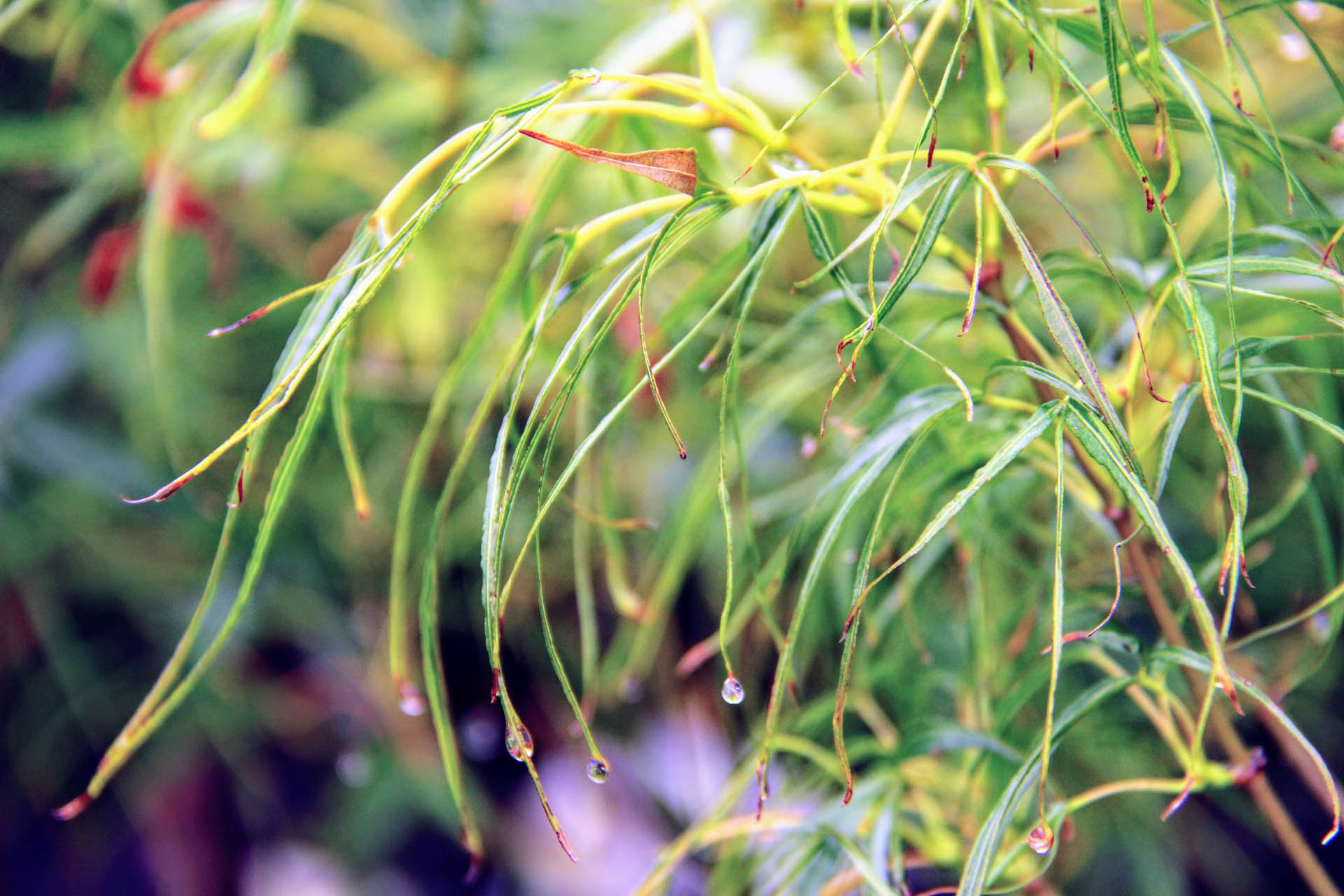
3. Acer shirasawanum ‘Autumn Moon’
is a perfect choice to add bold color and texture to your container garden.Not many maples can boast such a vibrant orange hue from spring through fall, but this full moon maple does it with gusto. It displays the best orange color in full sun to light shade, but it also has a lovely bright green color when grown in full shade. It has a moderate growth rate and reaches around 7’ tall by 4’ wide at 10 years old. It is hardy in USDA Zones 5-9. We have it available in most sizes, including #1, #3, and #7. Shop Here.

4. Acer palmatum ‘Kurenai jishi’
is a standout maple with slow, compact growth and breathtaking crinkled leaves that are bright red in spring, burgundy-purple in summer, and orange in fall. It is hardy in USDA Zones 5-9. It makes a big impact despite its small size, reaching only about 4’ by 3’ at 10 years old. Kurenai jishi is similar in habit to the classic Shishigashira, or Lion’s Mane Maple, but with more unique red coloration. It is available in various sizes, including #7 and Jr. Specimen. It grows well in full sun to partial shade. Shop Here.

5. Acer japonicum ‘Green Cascade’
is an excellent choice for adding a weeping maple to your mix. This popular maple has an elegant spreading habit that looks incredible cascading down the sides of a pot. In summer, it has a bright green color that complements other maples very well, and in fall it puts on an incredible show with tones of gold, crimson, and orange. The leaves are deeply dissected, giving a nice lacy texture. Green Cascade is available in a range of sizes. It grows well in full sun to partial shade. Shop Here.

6. Acer palmatum ‘Geisha Gone Wild’
boasts incredibly stable variegated foliage in tones of pink, green, purple, and cream. The leaves are slightly twisted, creating an interesting texture. The spring color display is brilliant, but in fall all the bright colors are only enhanced. With a manageable growth rate, this maple reaches a height of about 6’ and width of 3’ at 10 years old. It is hardy in USDA Zones 6-9. It is available in various sizes. It grows best in partial shade. Shop Here.


7. Acer palmatum ‘Ryugu’
is highly unique for its features including very slow growth, a naturally shrubby form without a central leader, variegated foliage, and cherry red stems that provide winter interest. It could be grown in a container for many years without ever needing pruning. The leaves are tiny, with consistent flecks of pink and white. It grows to a size of about 3’ by 3’ in 10 years and is hardy in USDA Zones 5-9. Grow in full sun to partial shade. Shop Here.

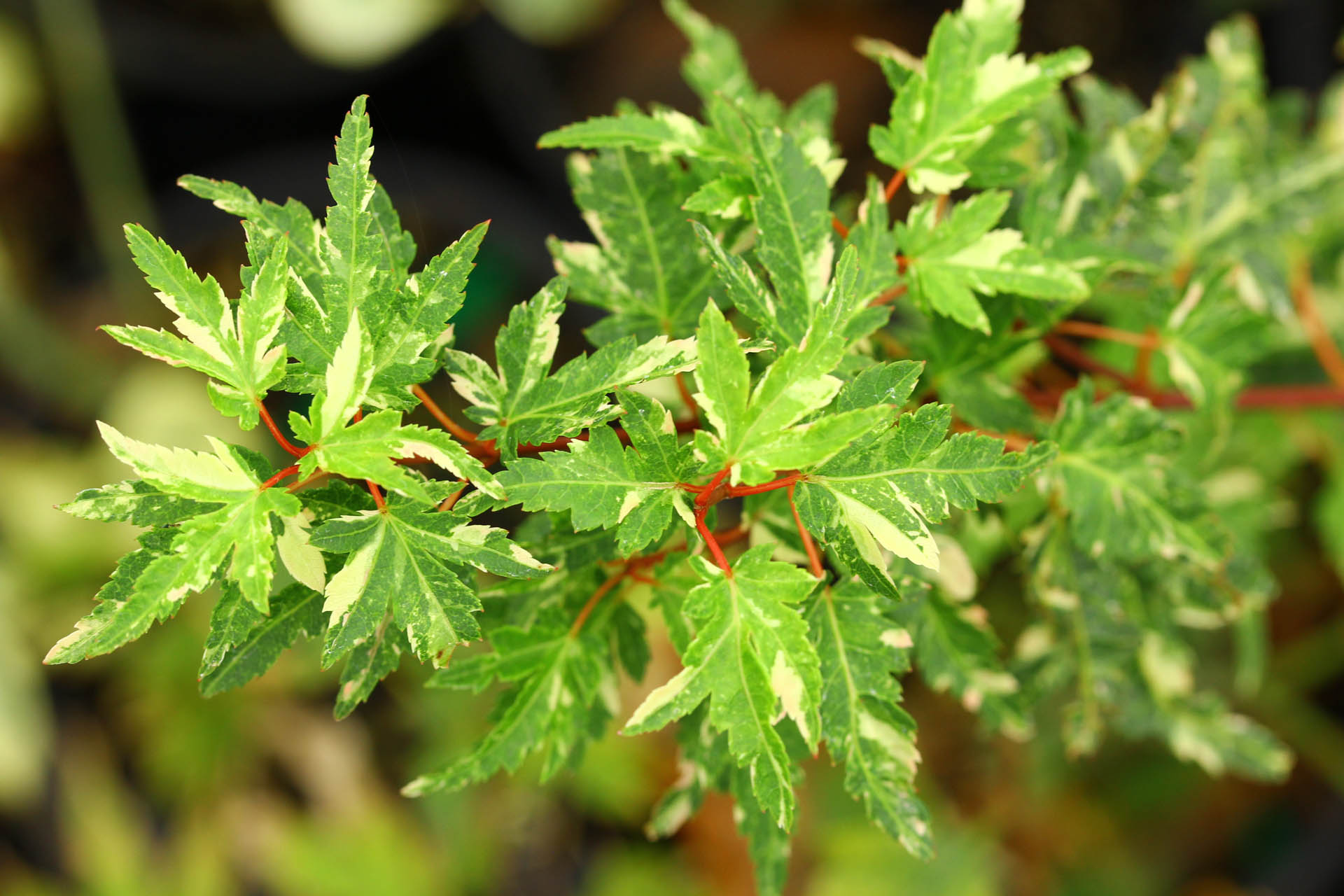
8. Acer palmatum ‘Black Lace’
is a standout deep burgundy maple for how well it holds its dramatic coloration throughout the year. Many dark red maples tend to fade to green during the summer, but Black Lace consistently displays its dark hue through the entire growing season with some scarlet and orange flickers in fall. It also has a slow growth habit and perfect rounded tree shape without pruning, making it a great fit for growing in containers. It is hardy in USDA Zones 5-9 and grows well in full sun to partial shade. Shop Here.

9. Acer palmatum ‘Mikazuki’
boasts incredible pink variegation that lasts from spring through fall. When grown in full sun, the spring leaves emerge with creamy veins against a purple background. If in a shadier location, you will see green veins with a pink background. These colors will persist through summer, and in fall they display green veins with a brilliant orange background. This maple is easy to grow and has a naturally bushy habit. It is hardy in USDA Zones 5-9 and reaches about 7’ tall by 5’ wide in 10 years without pruning. It grows best in full sun to partial shade. Shop Here.


10. Acer palmatum ‘Rhode Island Red’
is possibly the best dwarf, red Japanese maple in existence. It holds its red color through the summer without bleaching, and its natural growth habit is a perfect miniature tree, only 6’ tall by 5’ wide at maturity. It is a very low-maintenance tree, easy to keep alive and perfect for growing in containers. It is hardy in USDA Zones 5-9 and grows well in full sun to partial shade. Shop Here.

Best Companion Plants
You may simply be looking for a single maple to grow in a container for an accent on your patio, porch, or balcony, but plants often look their best when in the presence of complementary companions. You can use a large, wide planter and tuck some of these around the base of your maple for a showy single container planting, or you can give each plant its own pot and create a whole garden display. These are some of our favorite companion plants, but anything that grows well in similar conditions and in containers will work.
Dwarf conifers –
We consider conifers and Japanese maples to be best friends. With the endless options for colors, textures, shapes, and sizes available between the two, and their similar growing requirements, they go together like bread and butter. Most conifers will also provide year-round interest in your container garden as well. Shop Dwarf Conifers Here. We know the selection can be overwhelming, so here are some great varieties to start with: Chamaecyparis obtusa ‘Chirimen’, Metasequoia glyptostroboides ‘Miss Grace’, Picea abies ‘Tompa’, P. abies ‘Perry’s Gold’, Pinus banksiana ‘Schoodic’, Pinus parviflora‘Aoi’, P. parviflora ‘Negishi’, P. parviflora ‘Regenhold Broom’, P. parviflora ‘Tanima no yuki’, and Pinus mugo‘Jakobsen’.

Hostas –
These shade-loving beauties are available in a vast array of colors, sizes, and textures. They are easy to grow and provide a lush look for spring and summer. Some even boast sweetly fragrant blooms!
Peonies –
While their bloom season is fleeting, you can’t beat the spring show of a peony. They are favorites in Asian style gardens. Their blooms often coincide with the Japanese maple’s best spring color show as well.
Irises –
You achieve 2 things with Iris: gorgeous blooms and spiky foliage for interest. You can look to different species for varying sizes, shapes, and colors.
Pieris –
Andromedas are often paired with Japanese maples, with good reason. They provide an excellent evergreen backdrop with a delicate texture and gorgeous flowers in late winter. You can find varieties that are solid green or variegated, with large or tiny leaves, and with flowers ranging anywhere from white to dark pink. They are tidy shrubs that can be easily kept small with pruning.
Ginkgoes –
Ginkgo biloba is a natural partner for Japanese maples and conifers. The unique leaf shape looks right at home among lacy leaves and bright needles and adds an exotic lushness. Shop Ginkgoes Here.
Grasses –
There are so many types, colors, textures, and sizes of grasses available, and they are incredibly low-maintenance. They can be easily tucked here and there to add interest and colors ranging from bright gold to black. Hakonechloa and Ophiopogon types are especially worth seeking out.
Ferns –
These woodland beauties look right at home with Japanese maples and are available in a surprisingly vast array of textures, sizes, and even colors. Some are evergreen, while some die back in the winter. Some become huge, while others stay mere inches tall and wide over time. Some are extremely winter hardy, while others are practically tropical. Many are different shades of green, while some are gold and orange.

Growing Japanese maples in containers is simple, rewarding, and can be done just about anywhere. Happy growing!


